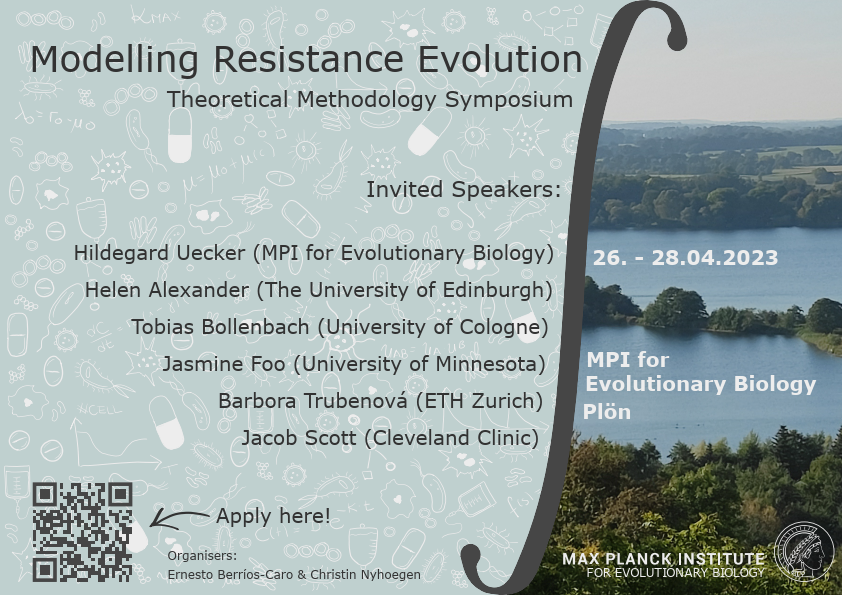Speaker
Description
Antimicrobial resistance is on the rise globally. Increased levels of resistance have been reported across bacterial strains and antibiotic compounds. In order to better target resistant bacteria, understanding the relationship between drug susceptibility and bacterial physiology is key. Here we present a mechanistic modelling approach to quantitatively predict antibiotic effect on bacterial growth dynamics under different environmental conditions. We focus on ribosome-targeting antibiotics, which constitute more than half of drugs used to treat infections and are among the most successful antimicrobials. We model the uptake of antibiotics and their dynamic interplay with ribosomes within an established model of bacterial growth physiology [2]. Integrating literature data on growth responses to four ribosome-targeting antibiotics (chloramphenicol, kanamycin, tetracycline and streptomycin [3]), we infer drug-associated parameters and obtain estimates that are consistent with reported literature values. Our model displays growth bistability: two possible growth states can be reached by isogenic cells experiencing the same antibiotic dose. This observation holds true for drugs that irreversibly bind the ribosomes but not for those that bind reversibly. Understanding the underlaying mechanisms of this behavior might help us gain insight on how tolerant or persistent populations of bacteria emerge. Currently, we are working on expanding our framework to predict the levels of phenotypic heterogeneity in isogenic populations of bacteria caused by the bistable growth response. By integrating theoretical knowledge and data on growth responses, we expect to identify crucial interactions and gain further mechanistic understanding of drug action. This will bring us closer to a predictive theory of bacterial responses to antibiotics, and thus on a path to rational design of antibiotic therapy. [1] O’Neill, J. Tackling Drug-Resistant Infections Globally: Final Report and Recommendations. Review on Antimicrobial Resistance. Wellcome Trust and HM Government; 2016. [2] Weiße, A. Y., Oyarzún, D. A., Danos, V. & Swain, P. S. Mechanistic links between cellular trade-offs, gene expression, and growth. Proceedings of the National Academy of Sciences of the United States of America ;2015. [3] Greulich P, Scott M, Evans MR, Allen RJ. Growth-dependent bacterial susceptibility to ribosome-targeting antibiotics. Mol Syst Biol; 2015.

